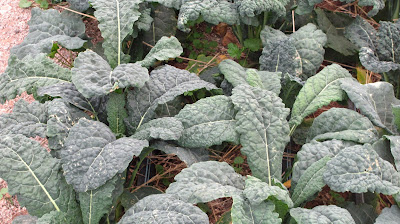A greenhouse may sound expensive, but the principles behind it can be anything from a sunny window to a cold frame to a full-fledged, heated greenhouse. All can be used to extend your growing season for vegetables.
If you have ever lived in south Georgia or have friends there, you know many vegetables will grow in that area throughout the winters with no problems such as onions, collards, cabbage, broccoli, carrots, and peas. All of these can stand reasonably cold weather, including some frost. But winter growing conditions in north Georgia are not the same.
A sunny, south-facing window can be an ideal place to grow a few herbs or leafy greens. For an even better environment, you may want to install a greenhouse window that extends from the side of the house to maximizes the amount of sun the plants get while remaining warm at night and allowing for convenient access. Fresh leafy greens or herbs can be tasty treats during the winter. Herbs in which the leaves are harvested are best. Those in which you harvest the roots or flowers are harder to grow under these conditions.
Kale is one of many vegetables that can be grown in
colder weather.
A cold frame is another low-cost greenhouse environment you may want to consider, which is an enclosed, unheated space, usually no larger than one to two feet high. It’s usually covered with plastic or glass and relies on the sun to warm it during the day. At night, it may drop back to ambient nighttime temperatures. Large stones or a container of water can help keep night temperatures up by releasing heat accumulated during the day.
During sunny days, these enclosures can get quite hot even in winter, so you may have to vent them during the brightest parts of the day. Venting can be done manually or with a passive, solar-powered venting device. These devices will open a vent when heated and are adjustable to your temperature requirements.
For even greater temperature control, these cold frames can be heated. Electric heating mats will add bottom heat to your plants and seedlings and help prevent cold injury on the coldest nights.
Finally, for the Cadillac approach, get a greenhouse. These can be inexpensive wood or PVC structures covered with plastic. Or they can be glass-enclosed, sophisticated environments that can even be an extension of your home. Many companies manufacture home greenhouses of various designs that can be free-standing or attached. Sunrooms that extend your living space are nothing more than greenhouses. These rooms not only give you space for growing plants but can extend the heated square feet of your home, adding considerable value to your investment.
Greenhouses can be unheated or heated, but all should have some method of venting during warm, sunny days. Many vegetables can be grown in such a structure. If it’s unheated, cool-season vegetables such as lettuce, spinach, cabbage, and broccoli will do well, and the enclosure will protect them on the coldest nights while accelerating growth with the heat from the sun on warm, sunny days.
With a fully heated and vented greenhouse, the sky’s the limit. Do you want fresh tomatoes or cucumbers in the winter? You can grow them in such a structure. Space is usually limited, so you may want to look for smaller plant types, like short-vine cantaloupes or patio tomatoes.
Trellising is an excellent way to maximize the space, too. Commercial greenhouse vegetable production relies heavily on trellising to produce quality tomatoes, pepper, cucumbers, etc.
Nothing beats walking into a warm, moist greenhouse in the winter that can be an enjoyable hobby with endless hours of enjoyment, and vegetable production can be just a small part of the possibilities.
Cold frames are useful for growing vegetables during winter.
The structure helps protect the plants form the intense cold.



No comments:
Post a Comment